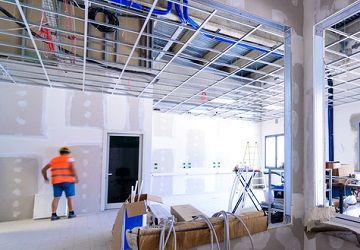The Right Time to Expand a Dental Practice
The biggest key trend is our ability to promptly appoint new patients, and what our recall system looks like, Jason Champagne, DDS, says.

Jason Champagne, DDS, knows a thing or two about growing and expanding a dental practice. He took his father’s legacy of a solo practice and built it into Champagne Family Dentistry, a thriving multi-doctor, multi-specialty practice that’s been around for more than 40 years.
How did he know it was time to grow?
“The biggest key trend is our ability to promptly appoint new patients, and what our recall system looks like,” Champagne says.
Key Questions
Champagne says that if new patients are booking into the following month, perhaps some six weeks out, it may be time to look at your existing space and ask, is it time to free up some space by moving certain practitioners to another location? But he also considers the demographic of where patients are located.
“If we’re finding that a lot of people are driving from maybe four or five miles away, does it behoove us to free up some space in our current location to capture the new patients who are calling in from some of the closer zip codes?” Champagne asks, rhetorically. “That is always going to be one of your first indicators as to whether or not you need to be in that area, especially if you are finding that you are starting to outgrow your existing space.”
But don’t act hastily, Champagne says. And don’t make any emotional decisions just because a nice, new location may be available. Do your research. Find out the projected growth in the location you’re considering. Are there new businesses? Is new construction going up? In other words, what’s driving the market?
And, how many dentists may already be serving patients in that location?
“What’s the reputation of the dental practices, and are patients happy with the quality of care in that area?” Champagne says. “If people are happy with what they have, is that the right spot for you? Or is there a practice that might be on the decline?”
That’s another consideration — to align with an existing practice and look at alternative exit strategies with the dentist who already has a good handle in that neighborhood. In other words, figure out a transition plan for them rather than going in and trying to compete.
Weighing the Risks
When Champagne built his current facility, he made it larger than he needed at that present time. That reflects his philosophy.
“I would argue whatever opportunity you have to build, take as much square footage as you need plus 25 percent, if not more,” he says. “An expanding dental practice can always find an opportunity to get in a new patient. And if you have a recall patient who needs a crown and wants to stay around for treatment that day, having an open room is a great thing.”
Champagne is an advocate of having non-booked, open chairs, because you don’t know when opportunity is going to knock. That opportunity can come in the form of new patients, but it can also involve bringing in new associates. He points to an increasing shortage of dentists graduating from dental school, and that most are looking for employment rather than ownership opportunities.
“It’s not uncommon for new dentists to want to work two days here or three days somewhere else,” Champagne says. “And specialists — it’s becoming more common to find specialty dentists leaving residency with the mindset of looking for opportunities in existing practices. We’re seeing a lot more of that.”
It was nine years ago when Champagne Family Dentistry expanded to its current location, and already it’s “busting at the seams,” and Champagne is considering building a second facility to house some of the specialty departments that have grown over the years.
“You can plan, plan, plan, and chances are you’re going to need more space.”
Staff and Mindset
Champagne stresses the importance of the right mindset where expansion is concerned. Prepare for some bumps in the road, because not everything is going to go as planned.
“Too often we go in with a very hard and fast vision of what the whole process is going to look like and how long it’s going to take,” he says. “But just like everything in life, you have to be open to some of the bumps in the road.”
And because there will be bumps in the road, Champagne says it’s critical to get staff support for the planned expansion. Make sure they’re aware of what’s going on, and the ultimate outcome of what you’re trying to achieve.
“When they’re onboard and they know what’s going on, they can help clear those roadblocks much easier because they really know what’s going on inside the practice to a much deeper level than the doctor ever does,” Champagne says. “And you need to understand there’s certain times when you defer to their expertise, not just rely on yours.”
ACTIVA BioACTIVE Bulk Flow Marks Pulpdent’s First Major Product Release in 4 Years
December 12th 2024Next-generation bulk-fill dental restorative raises the standard of care for bulk-fill procedures by providing natural remineralization support, while also overcoming current bulk-fill limitations.